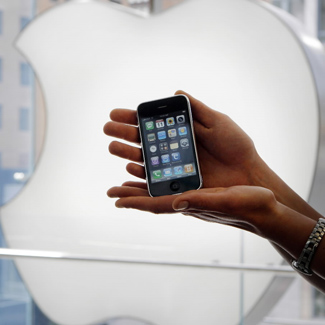Oh, for the ring of common sense
Steve Makris
Province

The Nokia 5310 XpressMusic easily fits in a pencil case or backpack pocket.

The smaller Palm Centro has a quick ring/vibrate button. –CANWEST NEWS SERVICE
The use of the most popular teen gadget, the cellphone, is a contentious issue in many schools. It is the subject of privacy concerns among students and teachers, and often disrupts classes when it is used by students without regard for the people trying to concentrate on work nearby.
One problem, educators say, is in equipping adolescents with a veritable Internet broadcasting studio. There have been embarrassing incidents of classroom encounters and activities being posted on the Net. But even text messaging or silent cyber-cruising in class can be disruptive.
Used responsibly, cellphones are a boon to parents and students alike — to stay in touch, share files, use as a calculator and calendar, homework reminder, voice recorder, camera and — outside classroom hours — as an entertainment device filled with music and video.
– The Palm Centro from Rogers Wireless, for instance, is a do-it-all full keyboard multi-function phone device for younger users.
Google Maps are lifesavers when making your way to a new school and an easy-to-flick switch on the top of the Centro quickly flips from ring tone to vibrate. It keeps all conversations in messaging-like display, sends text, pictures, audio and video clips, keeps all your personal e-mails and uses Pocket Tunes for managing audio, video and audio books.
You can create, edit and view Word and Excel compatible documents, as well as view PowerPoint and PDF files.
It can also be used as a modem for connecting a laptop to the Internet via Bluetooth and comes with calculator, calendar, camcorder, camera, contacts, memos, messaging, Quick Tour, tasks, voice dial, voice memo, web and world clock.
– The Nokia 5310 XpressMusic from Rogers Wireless easily fits in a pencil case or backpack pocket and includes an alarm clock, to-do list, notes, calculator, stopwatch and countdown timer.
The calendar allows up to 3,000 entries, with week-view functionality including homework reminder, memo, call, and birthday notes. It can synchronize with MS Outlook contacts, calendar, notes and comes with Nokia PC Suite connectivity via USB and Bluetooth. It’s also a music phone.
– Samsung’s Instinct from Bell has a full QWERTY touch-screen keyboard and includes a stylus option. It supports expandable memory of up to eight gigabytes with a Micro SD Card, over-the-air access to notes, tasks and to-do lists, easy file sharing with Bluetooth beaming, GPS navigation capabilities and a two-megapixel camera/camcorder.
– Parents will like GPS-based services from Telus Kid Find and Bell‘s Seek and Find service. It shows where your child (and their phone) is at any time on a home Internet-connected computer or a cellphone screen. Parents can even see their child’s actual path home. It lets you know when your child arrives at certain destinations, such as being at school on time. Both services work with a wide variety of “parent” and “child” phones for $5 a month.
– The cordless ICD-UX70S Digital Voice Recorder ($109.99) has a built-in one-gigabyte Flash memory that lets users record up to 290 hours of lectures, personal notes and more. You can even play back your favourite MP3 audio files and listen on the included stereo headphones. It features five recording modes and works with Windows and Mac computers.
© The Vancouver Province 2008










